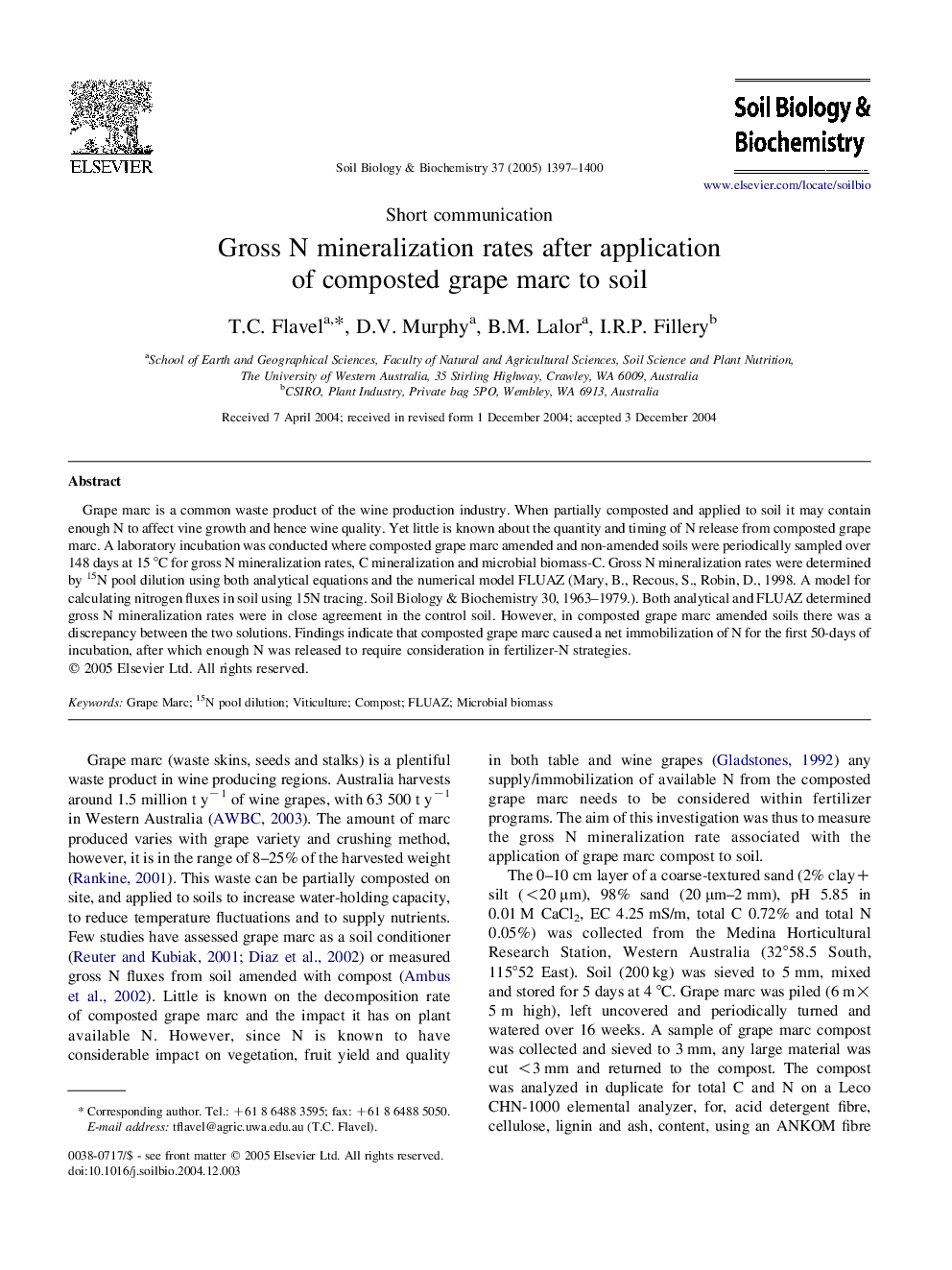| Article ID | Journal | Published Year | Pages | File Type |
|---|---|---|---|---|
| 10846159 | Soil Biology and Biochemistry | 2005 | 4 Pages |
Abstract
Grape marc is a common waste product of the wine production industry. When partially composted and applied to soil it may contain enough N to affect vine growth and hence wine quality. Yet little is known about the quantity and timing of N release from composted grape marc. A laboratory incubation was conducted where composted grape marc amended and non-amended soils were periodically sampled over 148 days at 15 °C for gross N mineralization rates, C mineralization and microbial biomass-C. Gross N mineralization rates were determined by 15N pool dilution using both analytical equations and the numerical model FLUAZ (Mary, B., Recous, S., Robin, D., 1998. A model for calculating nitrogen fluxes in soil using 15N tracing. Soil Biology & Biochemistry 30, 1963-1979.). Both analytical and FLUAZ determined gross N mineralization rates were in close agreement in the control soil. However, in composted grape marc amended soils there was a discrepancy between the two solutions. Findings indicate that composted grape marc caused a net immobilization of N for the first 50-days of incubation, after which enough N was released to require consideration in fertilizer-N strategies.
Related Topics
Life Sciences
Agricultural and Biological Sciences
Soil Science
Authors
T.C. Flavel, D.V. Murphy, B.M. Lalor, I.R.P. Fillery,
